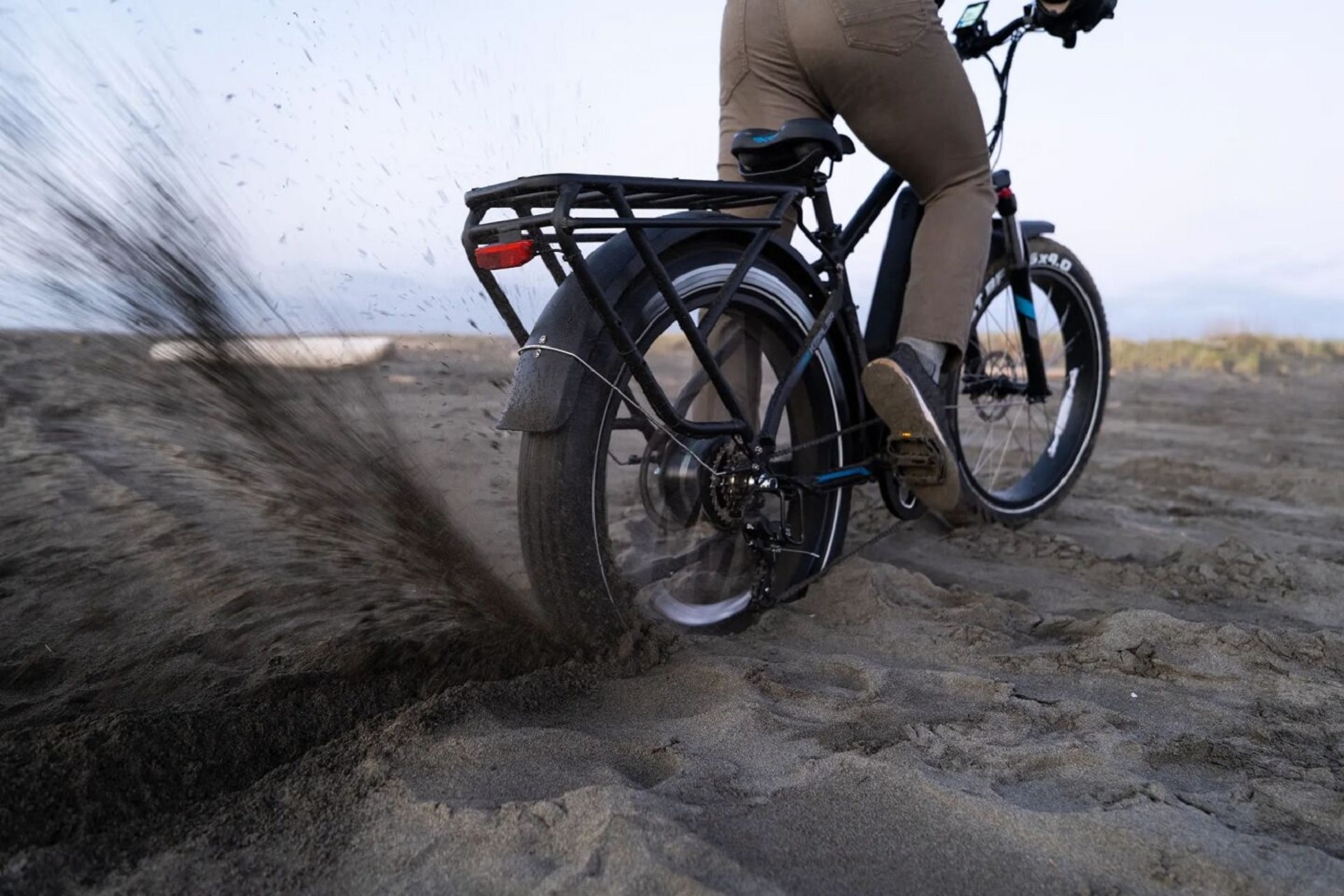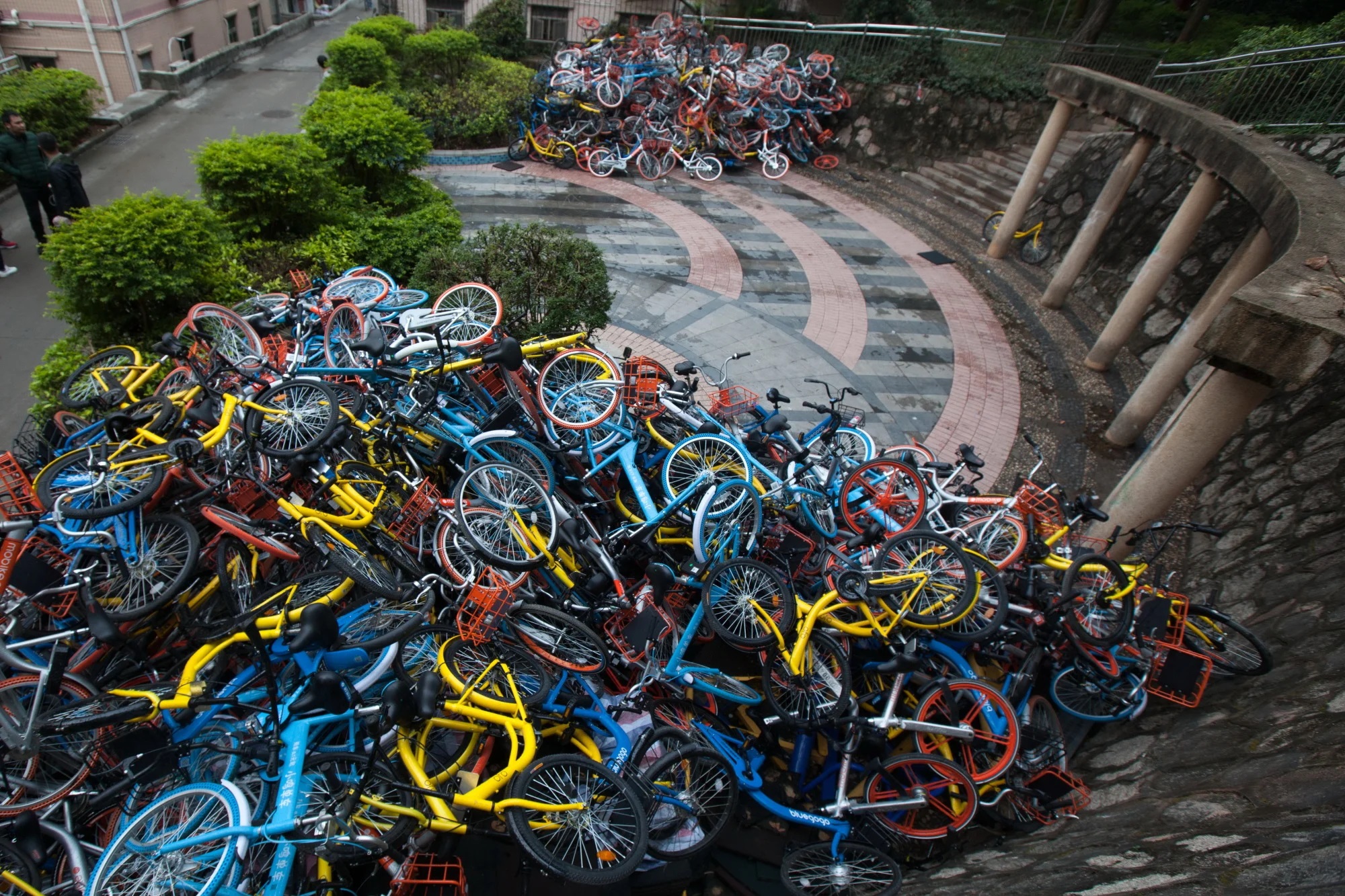Table of Contents
Many parents forget what it’s like to be a child. The everyday struggle of opening a door by oneself or just walking in a straight line. We’ve lived so many years with the relevant knowledge, we almost take it for granted. However, this new age of technology has left parents wondering an important question: ‘how do I teach my kids to ride their eBike safely?’.
And so, we’ve compiled a guide to eBikes for kids; helping adults better understand and teach both the technology and safe practices behind these vehicles. Learn everything below and eliminate any risk of injury to your child from riding an unsuitable eBike.
Before we begin, it’s essential to understand that allowing most young children 6 years old and under to ride eBikes is not recommended. It is irresponsible parenting to encourage young children with developing motor skills to ride a vehicle at speed.

Via plasticsmakeitpossible.com
With that out of the way, let’s begin our guide to eBikes for kids, starting with the key differences between an eBike and a standard kids bike:
The differences between eBikes and a typical kids’ bike
First, there are a few factors to consider when choosing a suitable eBike for your child. It is a parent’s responsibility to ensure their child is riding a safe model, in line with their own limitations. When compared to a typical kids’ bike, an eBike is a very different vehicle.
Parents can be left wondering which is the most suitable choice. An immediate example of a safe mountain bike design for young riders would be from Vuly’s range of kids bikes, which include Shimano 21-speed gear indexing, responsive disc brakes and more. Most of their models feature good equipment and weigh approx. 30 lbs (~13.5 kg), usually less.

Via trekbikes.com
Even a small eBike is going to come in at nearly twice that weight, which may not feel like a big deal if you’re a grown adult, but to a kid, the weight matters a lot more. Many more manufacturers also release whole ranges of kids’ eBikes, geared towards toddlers, teens and those in between.
However, those seeking an eBike should learn what to look for – view the variables and key differences between a standard kids’ bike and an eBike below:
Weight
It’s important to remember that children have nowhere near the strength or mass of an adult. Whilst many manufacturers account for this, it’s essential that you choose a model suitable for both the weight and height of your child.

Via cyclekids.bike
Generally speaking, these eBikes are only slightly heavier than a traditional kid’s bicycle, due to these added electrical components. It’s always best to choose an eBike that’s ~5kg lighter than your child, and we insist on waiting until they are of a suitable age.
For reference, the average 8-year-old is ~25 kg, the minimum age for riding as recommended by our team.
Rear heavy weight distribution
Another aspect to consider is the pronounced rearward bias, as a result of the hub motor and battery. We highly recommend making sure your child is both familiar and confident with their eBike before committing to any longer rides.
Much of this additional weight is due to components being located towards the rear. Whilst this is down to the make and model, this is typically the case amongst most hub-driven eBikes, including adult models. Although apparent, it’s so minimal that the majority of riders will not have any issues.

Via newatlas.com
This bias also continues to balance out by increasing traction, control and stability. More weight over the back wheel typically means more traction, up to a certain point. As kids’ bikes are already quite light, such a rear weight bias would still offer this added bonus.
Mid-drive models offer a more balanced solution, although usually cost considerably more. Learn all about the differences between mid-drive and hub-drive eBikes here.
Sensitive components
eBikes are packed with sensitive electrical components that can malfunction when not treated carefully. Despite this, any danger to the rider is extremely minimal – any legitimate eBike model has already passed a series of strict fire and electrical safety standards, regulated by governing bodies.
Even so, ensure your child is at an age where they can be trusted with delicate (and expensive) components. The battery & display are the two most commonly interacted with components and also amongst the most sensitive.

Via himiwaybike.com
All you can really do for the display is keep it dry with a screen cover and well fastened to avoid any impacts. For batteries, learn how to maximise PEV battery life here. Continue reading on for more differences, and how to mitigate any risk.
Easier to damage
If there’s one thing children love to do, it’s damage things. As you may have guessed, these additional electrical components make eBikes a tempting target for any accident. Whilst eBikes are fun and will take some abuse, they aren’t toys.
Ensure you cover all the basics of riding beforehand to minimise the chance of a crash and subsequent damage. Before their first ride, make sure your child understands that they must be gentle with their eBike and avoid any unnecessary damage or exposure to the elements.

Via mashable.com
Want to keep everything running smoothly? Read through our guide to DIY eBike maintenance at home now!
Accelerates much faster than a regular bicycle
With an electric motor solely responsible for propulsion, an eBike accelerates much, much faster than a regular bicycle. Due to the gyroscopic precession of the front wheel, bicycles and eBikes alike almost balance themselves at speed.
However, we still insist that parents ensure their chosen eBike is suitable for their child’s riding ability. Otherwise, your child could struggle to stay in control and potentially cause an accident. Take them on a couple of practice rides first, or brush up their skills on a regular kids’ bike.
Plenty of models offer a selection of riding modes, each with varying degrees of speed, acceleration and power. These modes limit the motor output, resulting in a safe, reliable and versatile vehicle. Other factors include size, weight, top speed and motor size, discussed in greater detail below.

Via aventon.com
Please note that certain provinces require a rider age limit for eBikes exceeding a certain power output. Check our guides to PEV law in the US, Canada and Europe to learn more.
What safety factors are at play?
Modern eBike manufacturers take safety very seriously, constantly testing and upgrading their models. Alongside this, a number of organisations exist to ensure all of these eBikes pass their rigorous safety standards. Not only do these certifications set a high standard of quality, but they also ensure that riders stay safe and unharmed in the event of a malfunction.
These certifications include UL2272, a U.S. certification awarded to personal e-mobility devices that meet the standards of their rigorous fire & electrical safety tests. You’ll be hard pressed to find a half decent eBike model that doesn’t meet this standard. Other safety and quality standards include ‘EN 15194’ and ‘CE mark’ of the EU Machinery Directive.

Via voltbikes.co.uk
Other than institutions, riders can take conscious steps to avoid any accidents or unsafe operational practices. Always ensure you are familiar with the environment, surrounding area and the terrain involved. Safe riding practices are always up to the responsibility of the child and parent. Always make sure you can quickly catch up to your child in the event of an emergency.
Finally, we highly recommend you know your route, as covered in our off-road eScooter riding guide.
Safe eBike operation for children
Before your child’s foot even pushes a pedal, you must first ensure they are wearing adequate safety gear. Not only does this include protective gear such as a helmet or gloves, but also high-visibility clothing such as a reflective jacket. Maintaining visibility is incredibly important for cyclists everywhere, especially in built-up areas with oncoming traffic; it could save your life!
Next comes your pre-ride check, which as the name suggests, comes before every ride. Although you don’t have to do this every day, it minimises the risk of your eBike or bicycle falling apart whilst you’re riding it. Parents should guide their child through checking the following:
-
Seatpost & handlebar stem
Ensure both components are tightly fastened and do not move under pressure. Check that they are of suitable height for your child to ride safely and comfortably.
Make sure that the wheels are properly fastened and in good condition, housing undamaged tires with plenty of pressure and tread. It’s also worth checking your tires are suitable for your intended terrain.
Easily one of the most integral components of any eBike. It’s much better to test your breaks beforehand, rather than find they don’t work when you need them. Riders must check that both the front and rear brakes function optimally.
As the brake systems of eBikes wear off quickly in comparison to pedal only bikes, these may require frequent inspection.
-
Checking the drive-train:
Ensure that the chain is clean and adequately lubricated. Next, cycle through all the available gears, confirming that the eBike can still shift normally. Do this in a safe environment before setting out.
-
Inspect any exposed wires or cables:
Ensure that no sharp bends, cuts, kinks or creases are present in any cable. This will eventually lead to fraying and damage to the protective covering, resulting in a potential component failure. Cabling must never come into contact with moving eBike components, as it could result in significant damage.
With those pre-ride checks out of the way, your child can start riding with confidence. Check that the battery is fully charged and off they go! Whilst most kids’ eBikes cap the top speed at ~15 mp/h, we still recommend telling your child to go slowly. Many models also include a speed limiter, alongside the previously mentioned riding modes.
If you’re still worried about your child, we highly recommend riding alongside them. Not only can you best guarantee their safety, but you are also enjoying a nice bonding experience. Want to learn more? Read on for any additional steps a parent can take to keep their kids safe when riding:
What steps can a parent take to help keep their kids safe when riding?
Ensure their eBike model has brake motor inhibitors
When your child stops pedalling or goes too fast, the brake motor inhibitor will activate. It’s a switch built into the brake levers designed to cut off the motor when certain riding parameters are broken.
If the motor decided it wanted to lock out at maximum revs, the motor inhibitor is the one saving you. This inhibitor also keeps your child from exceeding a set speed, whilst aiding in any emergency stops. If your eBike is geared, riders can use this feature to slow down via the motor.
Avoid eBikes with throttles
Generally speaking, eBike models with throttles are typically more powerful than their pedal-assist counterparts and too much for a child to handle. Even still, we believe the throttle is unnecessary amongst modern models. This is mostly due to the fact that the pedal assistance received from the motor is easily enough to tackle most challenges.
In many cases, a throttle actually makes an eBike more dangerous, as poor control or a slip could result in an accidental acceleration and send the rider flying. Kids will be kids, they’re clumsy and will always want to push it to the limit. A throttle is a constant temptation for kids to go faster and faster without any effort and adds a level of control that a child is not ready for.

Via lift-mtb.com
Lastly, throttled eBikes varying regulations across the world, with UK and Europe maintaining that such eBikes may only see speeds of up to a walking pace. They are prohibited to operate below a certain age in some areas and are even classified as electric mopeds in certain countries.
Keep eBike power within a reasonable range
Limiting your choice of eBikes to models with a motor size between 250-500W is essential. A child simply has no need for any more than this and will increase the risk of a high-speed incident. Depending on the model, even 500W is pushing the limit, as we’ve seen such eBikes exceed even 25 mp/h.
The overall power and acceleration offered by motors of 500W+ can prove too much for most children. We recommend opting for a motor output of ~350W, although this depends on the height, weight, age and riding competence of your child. If this hobby develops into a continued passion for them, you can safely exceed this limit once they reach their teens.
Educate your kids
The undisputed best method of ensuring safe riding is an educated child. By taking the time to teach your child how to ride responsibility, you are arming them with knowledge that they will use for life. If you’re a good teacher, your child will still be using the same techniques 20 years later.
Not only do educated children better identify and avoid risks, but they will also react faster and more appropriately to oncoming danger. We highly advise going over everything we have covered with your child. Ensure that it all sinks in and let them practice alongside you – they will remember it for life!





